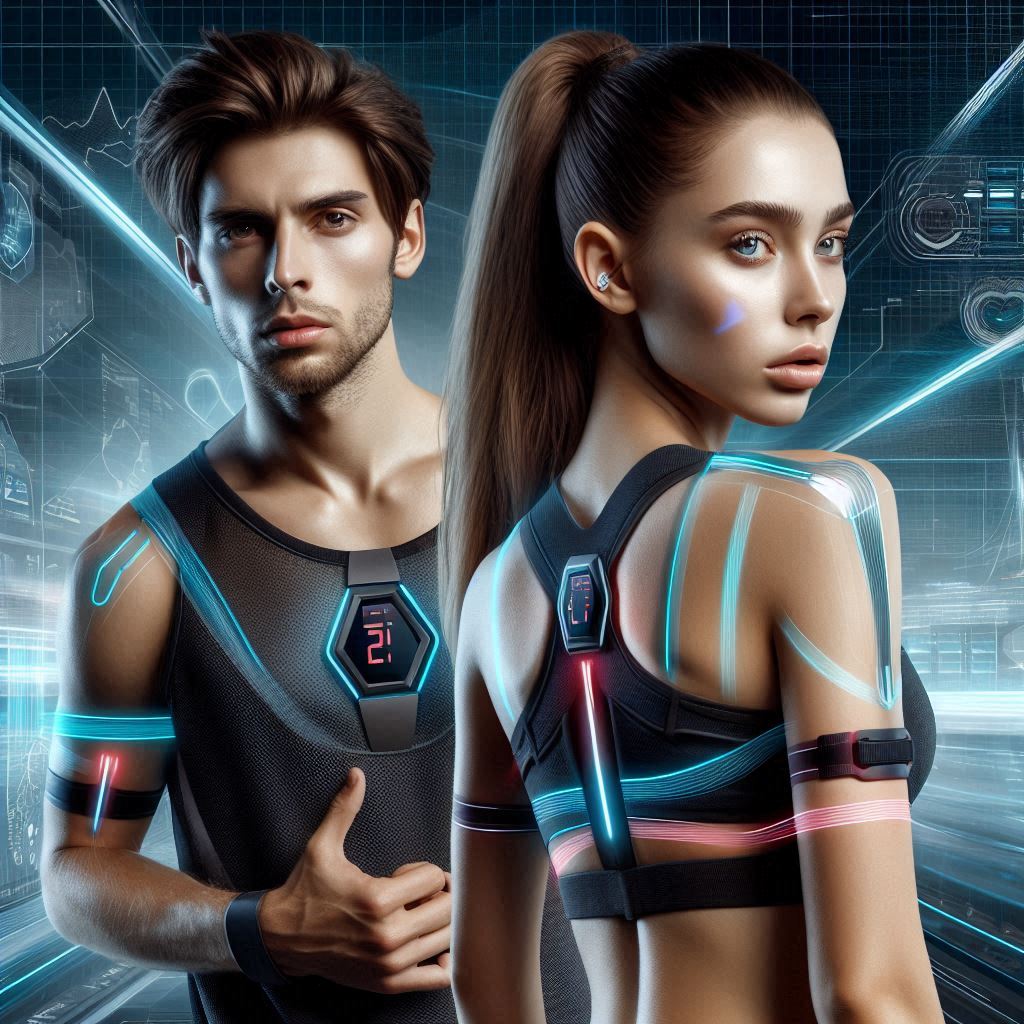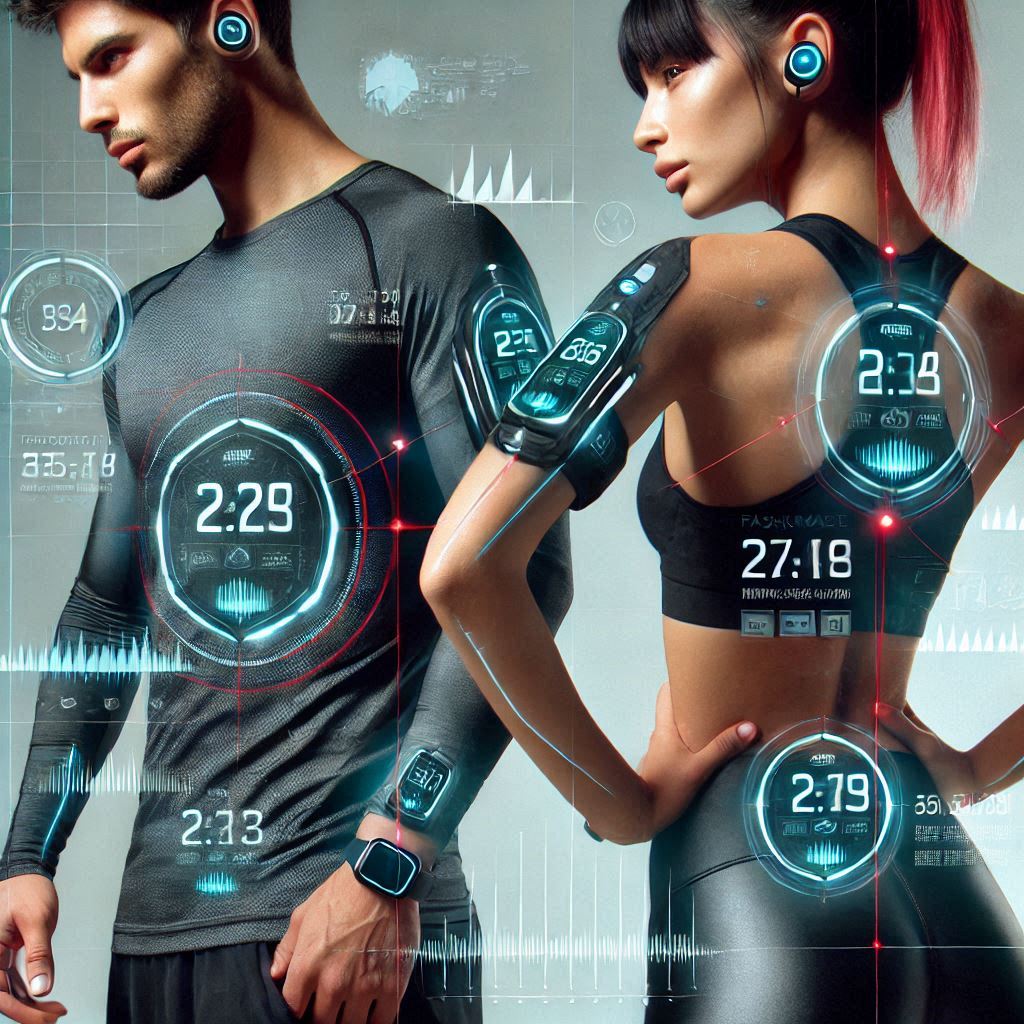
Why Do Pro Sports Shirts Have a Bump On The Back?
Unveiling The Mystery Of The Biometric Tracker
In the world of professional sports, every detail matters. From the shoes athletes wear to the food they consume, everything is meticulously planned and executed. One such detail that often goes unnoticed by the casual viewer is a small unit located on the back of athletes’ shirts, particularly between their shoulder blades. This unit, often mistaken for a simple design element or branding, is actually a sophisticated piece of technology that plays a crucial role in modern sports.
The Unit Is More Than Meets The Eye
This unit, which is commonly seen in sports like rugby and football, is a state-of-the-art biometric tracking system. It’s housed in a padded casing to ensure the safety of both the player and the device itself. Despite its small size, this unit is packed with a variety of sensors and devices, each serving a unique purpose.
A Hub of Technology
The unit contains a transmitter, a GPS tracker, an accelerometer, a gyroscope, and a magnetometer. Some units are also connected to a heart rate monitor, usually worn separately in a chest band. Each of these components works together to collect a wealth of data about the player’s performance.
The GPS tracker monitors the player’s movements on the field, tracking the distance covered, the speed at which they move, and the routes they take during the game. The accelerometer measures the force of impacts, providing valuable data about collisions and other physical interactions. The gyroscope and magnetometer work in tandem to provide detailed information about the player’s orientation and rotation, adding depth to the data collected by the accelerometer.
It can even work out if the player is vertical or horizontal!

The Role of the Unit
The data collected by this unit is transmitted in real-time to computers monitored by the team’s coaches and trainers. This real-time data allows them to make informed decisions about the player’s performance and strategy. For instance, they can monitor the physical toll a game is taking on a player, track their speed and distance covered, and even analyze the effectiveness of different strategies based on the player’s movements.
Moreover, the data can be stored and analyzed later, providing insights into the player’s performance over time. This can help in identifying patterns, assessing the player’s fitness and endurance, and even predicting potential injuries.
Can the Unit Hurt a Player?
While the unit is designed with player safety in mind, it’s a valid question to ask if it could potentially cause harm during a rough interaction or collision in the game. The unit is housed in a padded casing, which is specifically designed to protect both the player and the device from any potential damage. This casing is made from materials that can absorb impact, reducing the risk of injury to the player.
However, like any piece of equipment, there’s always a small risk of it causing discomfort or injury, especially in high-contact sports. For instance, in a high-impact collision or fall, the unit could potentially press against the player’s body, causing discomfort. But it’s important to note that such instances are rare, and the benefits of the data collected by these units far outweigh the minimal risk they pose.
Moreover, sports organizations and teams take player safety very seriously. The placement of the unit between the shoulder blades is strategic, as this area is less likely to be directly impacted during play. Also, the size and weight of the unit are carefully calibrated to minimize any potential discomfort or risk to the player.
There’s always a small risk associated with any piece of equipment in sports, the design and placement of these biometric tracking units are done with utmost consideration for player safety. The invaluable data they provide in enhancing performance and preventing injuries significantly outweighs the minimal risk they pose. As technology continues to advance, we can expect these devices to become even safer and more comfortable for athletes in the future.
How is the Biometric Tracker Positioned Understanding the Placement?
The positioning of the biometric tracker is a crucial aspect that ensures both the comfort of the athlete and the accuracy of the data collected. The tracker is not directly attached to the skin. Instead, it is strategically placed in one of two ways
Integrated into the Sports Shirt
In some instances, the tracker is incorporated into the sports shirt itself. The shirt is designed with a special pocket located between the shoulder blades, an area less likely to be impacted during play. This pocket houses the tracker, allowing it to be easily inserted and removed as required.
Secured in a Harness
In other cases, the tracker is secured in a harness that the athlete wears under their shirt. This harness, often resembling a sports bra, is designed to hold the tracker firmly in place while minimizing any potential discomfort for the athlete.
Ensuring Accurate Data Collection
Despite not being directly attached to the skin, the tracker is capable of collecting highly accurate data. This is due to the advanced technology housed within the tracker. The components of the tracker, including the GPS, accelerometer, gyroscope, and magnetometer, are extremely sensitive and can accurately measure various parameters such as movement and impact force. This ensures the collection of precise data, regardless of the small distance between the tracker and the athlete’s skin.
In conclusion, the placement of the biometric tracker, whether integrated into the sports shirt or secured in a harness, is carefully designed to ensure the comfort of the athlete while enabling the collection of accurate and valuable data. This data plays a crucial role in enhancing athletic performance, making the tracker an indispensable tool in modern sports.
The Future of Biometric Tracking in Sports
As we look towards the future, the potential for biometric tracking in sports is immense. The technology is continually evolving, and we can expect these devices to become even more sophisticated and insightful in the years to come.
Enhanced Data Collection
Future iterations of these devices could include additional sensors to collect even more data. For instance, they could monitor hydration levels, muscle fatigue, or even mental stress levels. This would provide a more holistic view of an athlete’s performance and well-being, allowing for even more personalized training and recovery programs.
Real-Time Feedback
While these devices already provide real-time data, future developments could allow for real-time feedback to the athletes themselves. This could help players make immediate adjustments to their performance, enhancing efficiency and reducing the risk of injury.
Integration with Other Technologies
The integration of biometric tracking devices with other technologies is another exciting prospect such as sunglasses. For example, combining these devices with virtual reality could provide immersive training experiences, allowing athletes to review and relive their performances in a detailed, interactive format.

Personal Use
While currently used primarily by professional athletes, we could see these devices becoming more accessible to amateur athletes and fitness enthusiasts. This would allow individuals to track their own performances and make informed decisions about their training and health.
The future of biometric tracking in sports is bright, with endless possibilities for enhancement and innovation. As technology continues to advance, these devices will play an increasingly integral role in how we understand and participate in sports. They represent a fascinating intersection of sports, science, and technology, and their potential is only just beginning to be realized.
How Can This Device Improve a Sports Person?
The biometric tracking unit in sports shirts is not just a tool for collecting data; it’s a powerful device that can significantly improve an athlete’s performance and well-being.
Performance Enhancement
The real-time data provided by the unit allows coaches and trainers to make immediate adjustments to an athlete’s training regimen. This can lead to more effective training sessions and ultimately, improved performance on the field. For instance, by analyzing the speed and distance covered by a player, coaches can tailor training programs to enhance endurance and speed.
Injury Prevention
One of the key benefits of these devices is their ability to help prevent injuries. By monitoring factors like impact force and heart rate, the unit can provide early warnings of potential injury risks. This allows for timely intervention, reducing the risk of serious injuries and prolonging the athlete’s career.
Recovery Optimization
The data collected by the unit can also aid in recovery. By monitoring the athlete’s physical exertion during a game, trainers can design personalized recovery programs. This ensures that the athlete recovers optimally and is ready for the next game or training session.
Personalized Training
Every athlete has his own build up and skills which makes them unique, and what works for one may not work for another. The biometric tracking unit allows for personalized training programs. By analyzing the specific data of an individual athlete, coaches can design training regimens that cater to the athlete’s strengths and weaknesses, leading to more effective training and improved performance.
Biometric tracking unit in sports shirts is a game-changer. It provides a wealth of data that can be used to enhance performance, prevent injuries, optimize recovery, and personalize training. It’s a powerful tool that can significantly improve an athlete’s performance and well-being. As technology continues to evolve, we can expect these devices to play an even bigger role in the world of sports. They represent the future of sports, where data and technology combine to create superior athletes.
Conclusion
In conclusion, the unit on the back of sports shirts is more than just a piece of technology. It’s a testament to the intricate interplay between sports and technology, and how this synergy is pushing the boundaries of athletic performance. As technology continues to evolve, we can expect to see even more innovative applications in the world of sports, further enhancing our understanding and appreciation of these incredible athletes. So, the next time you watch a game, take a moment to appreciate the small unit on the players’ shirts – a symbol of the unseen science that underpins the spectacle of sports.
Join the Discussion
We hope you found this world of biometric tracking in sports informative and enlightening. Now, we’d love to hear from you!
Athletes – How do you feel about using such technology in your training and games? Do you think it has improved your performance?
Coaches and Trainers – How has this technology changed the way you train your athletes? What other potential uses do you see for it?
Sports Enthusiasts – How do you think this technology is changing the face of your favorite sports? Do you think it’s making the games more exciting to watch?
Tech Enthusiasts – What other advancements would you like to see in this field? How else do you think technology can revolutionize sports?
Remember, every opinion matters and every perspective is unique. So don’t hesitate to share this post, your thoughts, ideas, and experiences. Let’s get the conversation started!
#SportsTech #BiometricTracking #PerformanceEnhancement #InjuryPrevention #SportsScience #AthleteTraining #GPSinSports #Accelerometer #Gyroscope #Magnetometer #SportsPerformance #DataInSports #SportsAnalytics #FutureOfSports #TechInSports #AthleteRecovery #PersonalizedTraining #SportsInnovation #AthleteWellbeing #SportsEquipment #SportsGear #AthleteHealth #SportsData #SportsAnalysis #TrainingOptimization #SportsRevolution #TechRevolution #SportsWorld #AthleteLife #GameChanger





